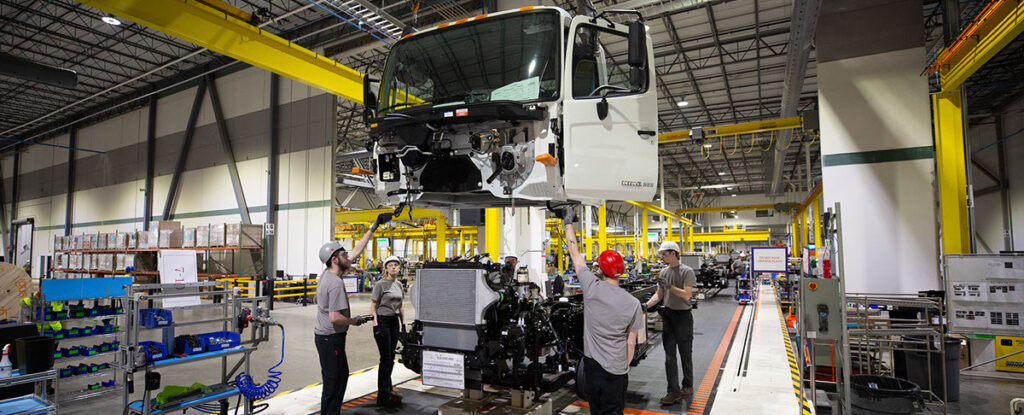CV Industry Facing Omicron Variant, Starting 2022 with Unfinished 2021 Units
ACT Research reports COVID risks have increased materially threatening manufacturing activity in Q1, inclusive of NA commercial vehicles
According to ACT’s latest release of the North American Commercial Vehicle OUTLOOK, in the short term, COVID risks have increased materially, as the highly contagious Omicron variant continues its global sweep, and reports indicate growing strains on staffing across the US and global economies, thereby threatening manufacturing activity in Q1, inclusive of NA commercial vehicles.
According to Kenny Vieth, ACT’s President and Senior Analyst, “Minimally, the world should be planning for a January of meaningful labor disruption, and by extension, increased manufacturing challenges, locally and globally.” He continued, “Low-cost manufacturing countries with low vaccination rates have had trouble in previous COVID waves. The Delta variant knocked Indian steel production off-line and disrupted automotive sub-assemblers in Southeast Asia. To combat Omicron, the Chinese government has instigated shelter-in-place quarantines, continuing their strict lockdown policy. As China remains the world’s workshop, Chinese parts suppliers and ports going off-line is a real short-term risk.” Vieth added, “Beyond the bad news, there is the silver lining that Omicron’s rates of serious infection and mortality are materially lower, especially for the vaccinated. And the Omicron has almost taken the more serious Delta variant off the map: On December 10th, there were 43 Omicron cases in the US. On January 4th, 95% of new US COVID case were the new variant.”
Regarding the impact to the North American commercial vehicle industry, Vieth said, “Despite broad-based demand strength, traction on commercial vehicle build has been elusive. The exception at year-end was better Classes 5-7 build rates related to the ability of the large pickup truck-based OEMs to move chips from smaller to larger GVW vehicles. That allowed some additional incomplete units to be finished into year-end. With fewer components requiring semiconductors, trailer production also showed some modest traction into year-end, suggesting some easing in commodities capacity.” He concluded, “It appears that the industry will begin 2022 with still unfinished 2021 units. At the levels we suspect, this is an unprecedented situation. If your company has parts on all those ‘built, but not built’ units, some adjustment will be required to align your 2021-2022 output with reported and forecast data.”
Category: Cab, Trailer & Body, Engines & Drivetrains, Equipment, Featured, General Update, Management, Products, Vehicle Lifts, Vehicles










